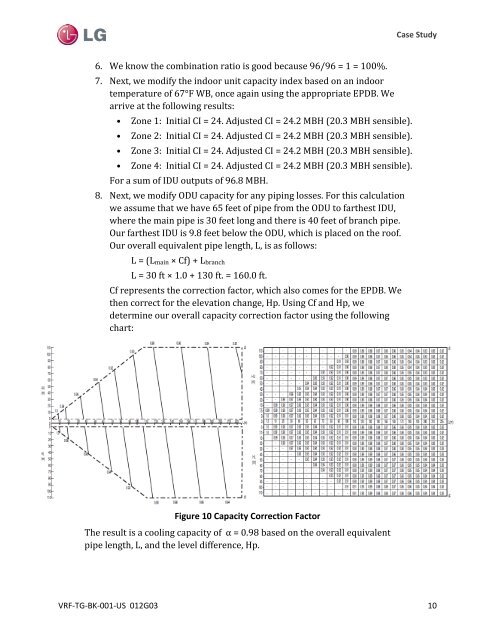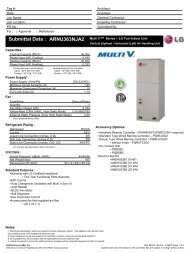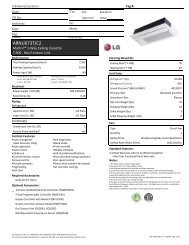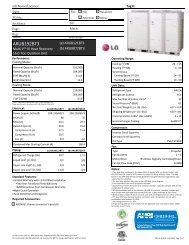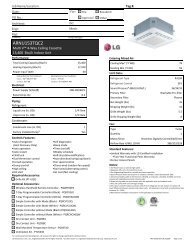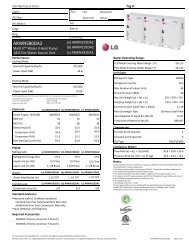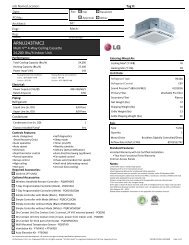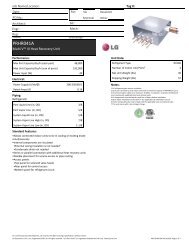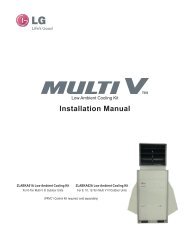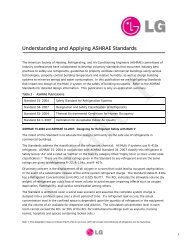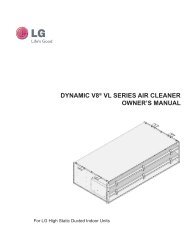eQUEST Building Energy Modeling Guide for LG ... - LG-VRF.com
eQUEST Building Energy Modeling Guide for LG ... - LG-VRF.com
eQUEST Building Energy Modeling Guide for LG ... - LG-VRF.com
You also want an ePaper? Increase the reach of your titles
YUMPU automatically turns print PDFs into web optimized ePapers that Google loves.
Case Study6. We know the <strong>com</strong>bination ratio is good because 96/96 = 1 = 100%.7. Next, we modify the indoor unit capacity index based on an indoortemperature of 67°F WB, once again using the appropriate EPDB. Wearrive at the following results:• Zone 1: Initial CI = 24. Adjusted CI = 24.2 MBH (20.3 MBH sensible).• Zone 2: Initial CI = 24. Adjusted CI = 24.2 MBH (20.3 MBH sensible).• Zone 3: Initial CI = 24. Adjusted CI = 24.2 MBH (20.3 MBH sensible).• Zone 4: Initial CI = 24. Adjusted CI = 24.2 MBH (20.3 MBH sensible).For a sum of IDU outputs of 96.8 MBH.8. Next, we modify ODU capacity <strong>for</strong> any piping losses. For this calculationwe assume that we have 65 feet of pipe from the ODU to farthest IDU,where the main pipe is 30 feet long and there is 40 feet of branch pipe.Our farthest IDU is 9.8 feet below the ODU, which is placed on the roof.Our overall equivalent pipe length, L, is as follows:L = (Lmain × Cf) + LbranchL = 30 ft × 1.0 + 130 ft. = 160.0 ft.Cf represents the correction factor, which also <strong>com</strong>es <strong>for</strong> the EPDB. Wethen correct <strong>for</strong> the elevation change, Hp. Using Cf and Hp, wedetermine our overall capacity correction factor using the followingchart:Figure 10 Capacity Correction FactorThe result is a cooling capacity of α = 0.98 based on the overall equivalentpipe length, L, and the level difference, Hp.<strong>VRF</strong>-TG-BK-001-US 012G03 10


